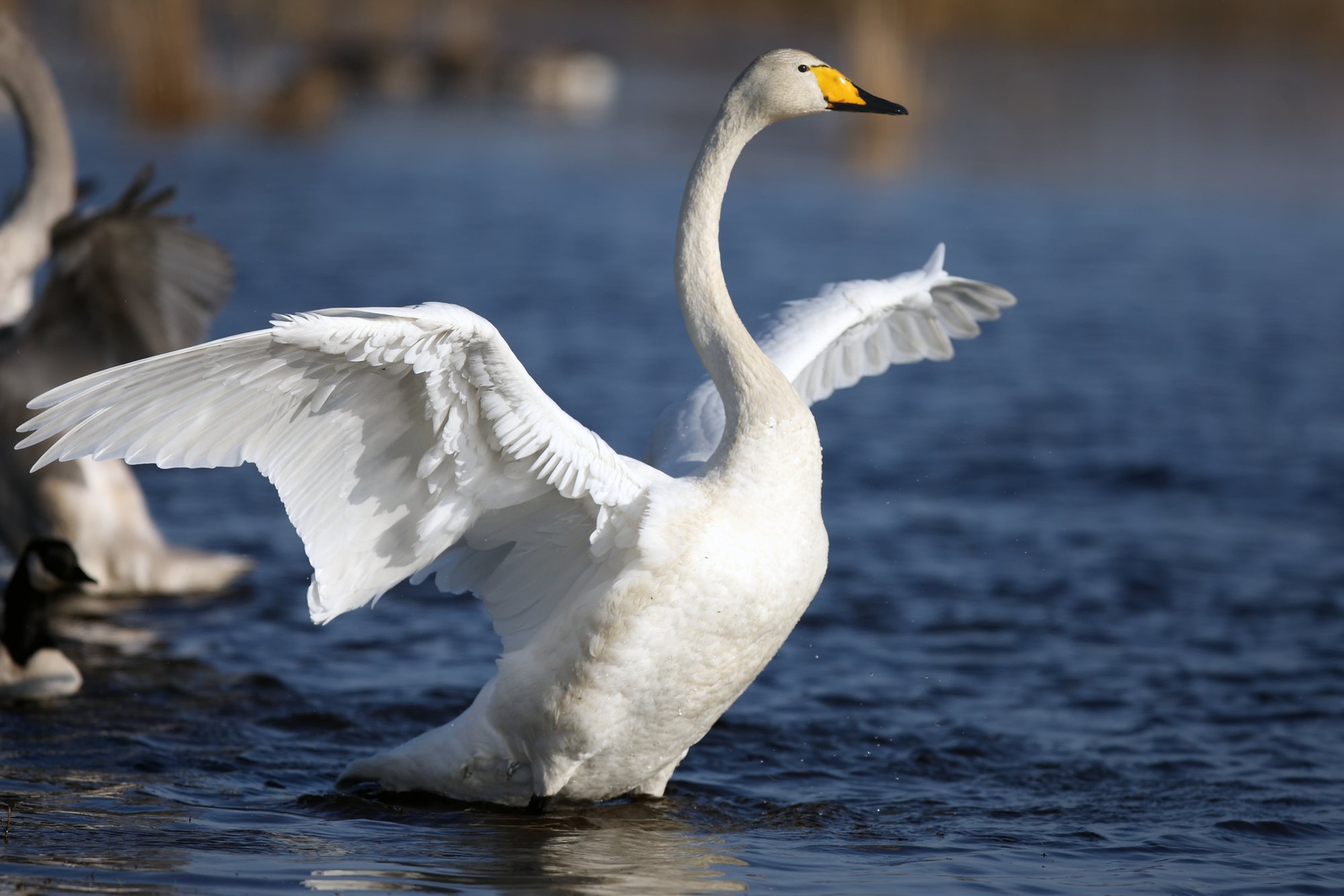The first of the annual waves - it’s waterfowl migration. An amazing sight to see each year as ducks, geese and swans head back north for the spring
I remember going to the local wildlife refuge in the spring and seeing thousands upon thousands of ducks and geese on the newly open water. For the beginner birdwatcher, ducks, geese and swans are a relatively easy group of birds to identify - at least the males. Many of the female ducks will look similar due to camouflaging plumage for nesting. Binoculars will be necessary to identify birds in areas that are moderately distant, but a spotting scope may be necessary if you are starting to watch birds on a lake or marshy areas where you cannot get closer to the birds.
Identifying Geese and Swans
Geese and Swans are larger waterfowl with longer necks than ducks. Males and females of both types are identical in plumage. Swans are the largest waterfowl, having a length of 50 - 60 inches (from bill to tail). Swans are usually white (or whitish with juvenile birds). The distinguishing marks here will be location and bill color and bill markings. Geese are smaller than swans with lengths from 23 - 28 inches. Geese have more variety in their plumage, but many species look distinctly different from others. When trying to identify geese, pay attention to the overall body plumage patterns. For example, is the body overall dark or light or white. Next, be aware of the coloring of the neck and head, as many geese have distinctive field marks in these areas. The Canada Goose has a black neck with a white chin patch while the Emperor Goose has a dark gray body but the head and back of neck are white. Spending a little time with a field guide and checking out the limited number of geese in North America will make your job of identifying geese and swans relatively quick.
Canada goose with brownish body, black neck and head with white chin patch.
Emperor goose with gray body and white head and back of neck
Whooper Swan
Identifying Ducks
Ducks are smaller than geese and swans with most having a length range between 15 - 22 inches. The plumage between males and females differs, with the males being more colorful and the females mostly brownish. This makes identifying the males of a species relatively easy between colors and patterning on the body. Some species are very similar and a spotting scope may be needed to identify the finer differences in those cases.
Overall Patterns
When seeing a duck for the first time, take note of overall coloring and body patterns. Many ducks have the sides of their bodies in large patches of color. In the pictures below you can see the Northern pintail with a gray side, the Northern shoveler with a reddish side and a canvasback with a whitish side. Next, look for head color and patterns on the head. Most of the time you will be observing ducks floating in water so these will be the two obvious parts. If watching birds on a lake or other body of water with waves, the views you get will be short due to the bird dipping down into the waves. Some distinct patterns include the eye-patch on the green-winged teal, the white patch behind the bill on the blue-winged teal, and the very obvious crest of the hooded merganser.
Northern Pintail
Northern Shoveler
Blue-winged Teal
Feeding Behavior
Another field mark to take note of is the behavior of the bird. Many ducks are dabblers, meaning they will go bottoms-up when feeding with their heads submerged. Others are diving ducks and will disappear for minutes and then reappear on the surface in a different location. This makes it harder to identify these types of ducks since you will get intermittent looks at them, and then be unsure if you are looking at the same duck when one reappears on the surface. Another type of feeder is the filter feeder. Those ducks will use their bills to move through mud and shallow water and filter that water through their bills, collecting those items that they would like to eat.
Mallard feeding - a dabbler
Green-winged Teal - a filter feeder
Red-breasted Merganser - a diving duck
Wing Patches
The last field mark that will be of interest when trying to identify ducks will be wing patches. Many of the field marks described above will be seen when the bird is on the land or water and being relatively still. When in flight though, the field marks will be very hard to see at a distance. When in flight, there can be color patterns in the middle part of the wing that will make it possible to either identify the duck or limit the number of species that it could be. I have provided some pictures of those species with these wing patches below.
Wood Duck
American Wigeon
Common Merganser
Tufted Duck
















